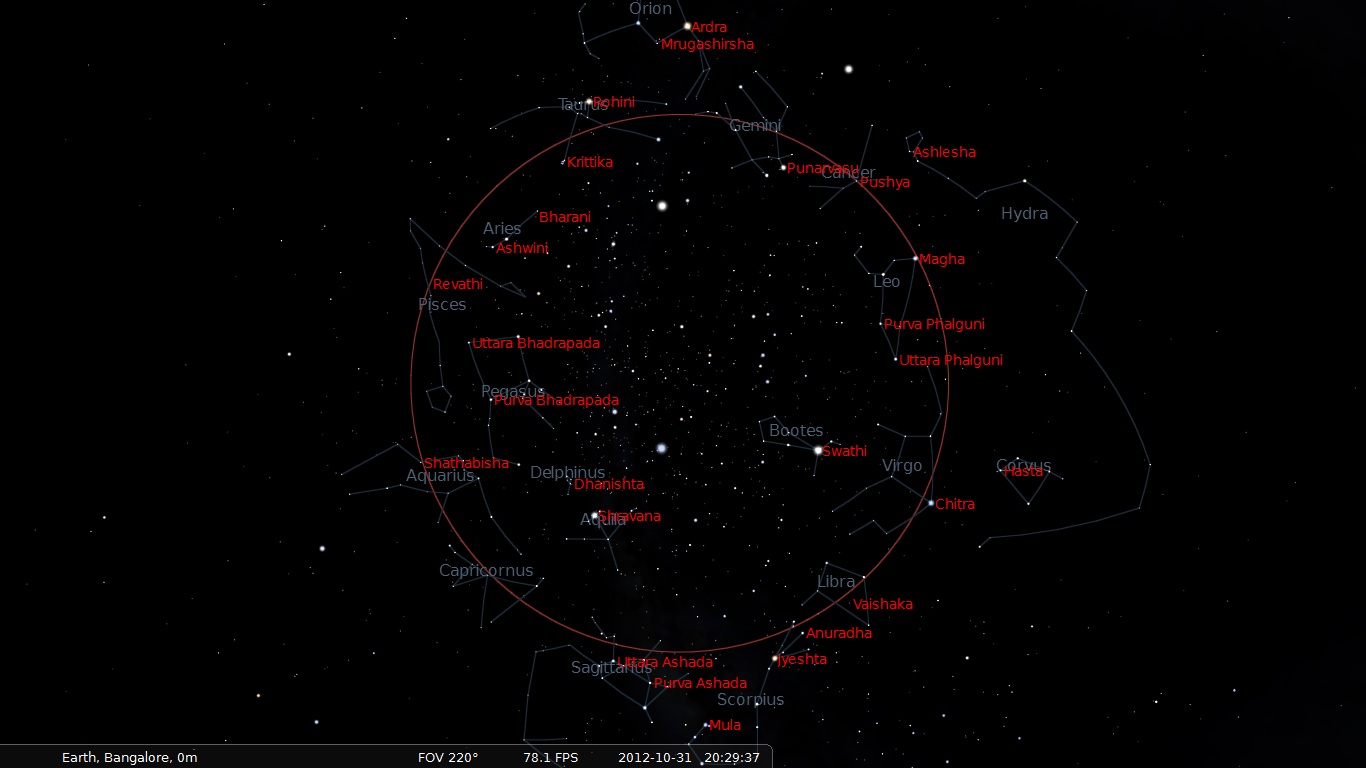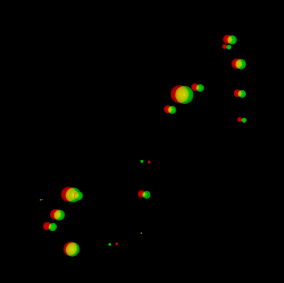|
Joishtho
Joishtho (, ''Jyôishţhô'' or , ''Jôishţhyô'', colloquially ''Jeţh'') is the second month and the last month for summer of the Bengali calendar. This month lies between the second half of May and the first half of June. Etymology The name of the month is derived from the star Jyestha, which is the 18th nakshatra or lunar mansion in Hindu astronomy and Vedic astrology associated with the string of the constellation Scorpii. It is the constellation visible on the meridian at mid-night from Indian sub-continent during this month. Observances marked (per official use in Bangladesh) *Joishtho 11 - The birthday of national poet Kazi Nazrul Islam Kazi Nazrul Islam (24 May 1899 – 29 August 1976) was a Bengalis, Bengali poet, short story writer, journalist, lyricist and musician. He is the national poet of Bangladesh. Nazrul produced a List of works by Kazi Nazrul Islam, large body of ... References {{Bengali calendar Months of the Bengali calendar ... [...More Info...] [...Related Items...] OR: [Wikipedia] [Google] [Baidu] |
Bengali Calendar
The Bengali Calendar or Bangla Calendar (, colloquially , or , , "Bangla Year") is a solar calendar used in the Bengal region of the Indian subcontinent. In contrast to the traditional Indian Hindu calendar, which begins with the month Chaitra, The Bengali Calendar starts with Baishakh. A revised version of the Bangladeshi calendar is officially used in Bangladesh, while an earlier, traditional version continues to be followed in the Indian states of West Bengal, Tripura, and Assam. The Bengali calendar began in 590–600 CE to commemorate the ascension of Shashanka, the first independent king in Bengal's unified polity. Some modifications were done to the original calendar during Mughal emperor Akbar's era, to facilitate the collection of land revenue at the start of bengali harvesting season. The first day of the Bengali year is known as Pohela Boishakh (1st of Boishakh) which is a public holiday in Bangladesh. The Bengali era is called ''Bengali Sambat'' (BS) and has a ... [...More Info...] [...Related Items...] OR: [Wikipedia] [Google] [Baidu] |
Boishakh
Boishakh (, , ''Bôishakh'', ''Baishakh'') is the first month in the Bengali calendar and Nepali calendar. This month lies between the second half of April and the first half of May.Between 14th April and 15th May. Etymology The name of the month is derived from the position of the Sun near the star Bishakha (). History The first day of Boishakh is celebrated as the Pôhela Bôishakh or Bengali New Year's Day. The day is observed with cultural programs, festivals and carnivals all around the country. The day of is also the beginning of all business activities in Bangladesh and neighboring Indian state of West Bengal and Tripura. The traders starts new fiscal account book called ''Halkhata''. The accounting in the ''Halkhata'' begins only after this day. It is celebrated with sweets and gifts with customers. Season The month of Boishakh also marks the official start of Summer. The month is notorious for the afternoon storms called Kalboishakhi (''Nor'wester''). The st ... [...More Info...] [...Related Items...] OR: [Wikipedia] [Google] [Baidu] |
Asharh
Asharh ( ''āshāḍh'', ''āsāḍha'') is the third month of the Bengali calendar, Bengali and Odia calendars and the Tirhuta Panchang (a Hindu calendar followed by the Maithil community in India and Nepal). It is the first of the two months that comprise the wet season, locally known as "Barsha" ( ''Bôrsha'', ''Barsha'', ''Barsā''), when the monsoon winds blow. It is one of the first five months of the year that have 31 days, according to the Bangladeshi version of the Bengali Calendar. In the Indian version of the Bengali Calendar, the month can have up to 32 days. Etymology It is named for the constellation Uttara Ashadha, Uttarashadha ( ''Uttôrashaŗha''), identified with Sagittarius (constellation), Sagittarius. Culture Bengali culture The month and the monsoon are welcome with songs, dance, and celebration in Bangladesh. A popular poem "Abar Eshechhey Asharh" আবার এসেছে আষাঢ় by Rabindranath Tagore, that is about this season. Odia ... [...More Info...] [...Related Items...] OR: [Wikipedia] [Google] [Baidu] |
Jyeshtha (nakshatra)
Jyeshtha ("The Elder" or "Older" in Sanskrit) is the 18th nakshatra or lunar mansion in Indian astronomy, Hindu astronomy and Jyotisha, Vedic astrology associated with the string of the constellation Scorpius (constellation), Scorpii, and the stars Epsilon Scorpii, ε, Zeta1 Scorpii, ζ1 Sco, Eta Scorpii, η, Sargas, θ, Iota1 Scorpii, ι1 Sco, Girtab, κ, Shaula, λ, Mu Scorpii, μ and Jabbah, ν Scorpius (constellation), Scorpionis. Astrology The symbol of Jyeshtha is a circular amulet, umbrella, or earring, and it is associated with Indra, chief of the gods. The lord of Jyeshtha is Budha (Mercury). Jyestha is termed in Malayalam as Thrikketta and in Tamil as Kēttai. The nakshtra is called honorifically as Trikkētta (Tiru + Kētta). Jyeshtha nakshatra corresponds to Antares. The Ascendant/Lagna in Jyeshtha indicates a person with a sense of seniority and superiority, who is protective, responsible and a leader of their family. They are wise, profound, psychic, maybe with ... [...More Info...] [...Related Items...] OR: [Wikipedia] [Google] [Baidu] |
Nakshatra
Nakshatra () is the term for Lunar mansion in Hindu astrology and Buddhist astrology. A nakshatra is one of 27 (sometimes also 28) sectors along the ecliptic. Their names are related to a prominent star or asterisms in or near the respective sectors. In essence (in Western astronomical terms), a nakshatra simply is a constellation. Every nakshatra is divided into four ''padas'' ( "steps"). The starting point for the nakshatras according to the ''Vedas'' is "Krittika" (it has been argued, because the Pleiades may have started the year at the time the ''Vedas'' were compiled, presumably at the vernal equinox), but, in more recent compilations, the start of the nakshatras list is the point on the ecliptic directly opposite the star Spica, called ''Chitrā'' in Sanskrit. This translates to Ashwinī, a part of the modern constellation of Aries. These compilations, therefore, may have been compiled during the centuries when the sun was passing through Aries at the time of the ver ... [...More Info...] [...Related Items...] OR: [Wikipedia] [Google] [Baidu] |
Indian Astronomy
Astronomy has a long history in the Indian subcontinent, stretching from History of India, pre-historic to History of India (1947–present), modern times. Some of the earliest roots of Indian astronomy can be dated to the period of Indus Valley civilisation or earlier. Astronomy later developed as a discipline of Vedanga, or one of the "auxiliary disciplines" associated with the study of the Vedas dating 1500 BCE or older. The oldest known text is the ''Vedanga Jyotisha'', dated to 1400–1200 BCE (with the extant form possibly from 700 to 600 BCE). Indian astronomy was influenced by Greek astronomy beginning in the 4th century BCEHighlights of Astronomy, Volume 11B: As presented at the XXIIIrd General Assembly of the IAU, 1997. Johannes Andersen Springer, 31 January 1999 – Science – 616 pages. p. 72/ref>Babylon to Voyager and Beyond: A History of Planetary Astronomy. David Leverington. Cambridge University Press, 29 May 2010 – Science – 568 pages. p. 4/ref>Th ... [...More Info...] [...Related Items...] OR: [Wikipedia] [Google] [Baidu] |
Scorpius (constellation)
Scorpius is a zodiac constellation located in the Southern celestial hemisphere, where it sits near the center of the Milky Way, between Libra (constellation), Libra to the west and Sagittarius (constellation), Sagittarius to the east. Scorpius is an ancient constellation whose recognition predates Greek culture; it is one of the 48 constellations identified by the Greek astronomer Ptolemy in the second century. Notable features Stars Scorpius contains many bright stars, including Antares (α Sco), "rival of Mars," so named because of its distinct reddish hue; Beta Scorpii, β1 Sco (Graffias or Acrab), a triple star; Delta Scorpii, δ Sco (Dschubba, "the forehead"); Theta Scorpii, θ Sco (Sargas, of Sumerian origin); Nu Scorpii, ν Sco (Jabbah); Xi Scorpii, ξ Sco; Pi Scorpii, π Sco (Fang); Sigma Scorpii, σ Sco (Alniyat); and Tau Scorpii, τ Sco (Paikauhale). Marking the tip of the scorpion's curved tail are Lambda Scorpii, λ Sco (Shaula) and Upsilon Scorpii, υ Sco (Lesat ... [...More Info...] [...Related Items...] OR: [Wikipedia] [Google] [Baidu] |
Meridian (astronomy)
In astronomy, the meridian is the great circle passing through the celestial poles, as well as the zenith and nadir of an observer's location. Consequently, it contains also the north and south points on the horizon, and it is perpendicular to the celestial equator and horizon. Meridians, celestial and geographical, are determined by the pencil of planes passing through the Earth's rotation axis. For a location ''not'' on this axis, there is a unique meridian plane in this axial-pencil through that location. The intersection of this plane with Earth's surface defines two '' geographical meridians'' (either one east and one west of the prime meridian, or else the prime meridian itself and its anti-meridian), and the intersection of the plane with the celestial sphere is the celestial meridian for that location and time. There are several ways to divide the meridian into semicircles. In one approach, the observer's upper meridian extends from a celestial pole and passes t ... [...More Info...] [...Related Items...] OR: [Wikipedia] [Google] [Baidu] |
Indian Sub-continent
The Indian subcontinent is a physiographic region of Asia below the Himalayas which projects into the Indian Ocean between the Bay of Bengal to the east and the Arabian Sea to the west. It is now divided between Bangladesh, India, and Pakistan. (subscription required) Although the terms "Indian subcontinent" and "South Asia" are often also used interchangeably to denote a wider region which includes, in addition, Bhutan, the Maldives, Nepal and Sri Lanka, the "Indian subcontinent" is more of a geophysical term, whereas "South Asia" is more geopolitical. "South Asia" frequently also includes Afghanistan, which is not considered part of the subcontinent even in extended usage.Jim Norwine & Alfonso González, ''The Third World: states of mind and being'', pages 209, Taylor & Francis, 1988, Quote: ""The term "South Asia" also signifies the Indian Subcontinent""Raj S. Bhopal, ''Ethnicity, race, and health in multicultural societies'', pages 33, Oxford University Press, 2007, ; ... [...More Info...] [...Related Items...] OR: [Wikipedia] [Google] [Baidu] |
Kazi Nazrul Islam
Kazi Nazrul Islam (24 May 1899 – 29 August 1976) was a Bengalis, Bengali poet, short story writer, journalist, lyricist and musician. He is the national poet of Bangladesh. Nazrul produced a List of works by Kazi Nazrul Islam, large body of poetry, music, messages, novels, and stories with themes, that included equality, justice, anti-imperialism, humanity, rebellion against oppression and religious devotion. Nazrul Islam's activism for political and social justice as well as writing a poem titled as "Bidrohī", meaning "the rebel" in Bengali, earned him the title of "Bidrohī Kôbi" (''Rebel Poet''). His compositions form the avant-garde music genre of Nazrul Geeti, Nazrul Gīti (''Music of Nazrul''). Born into a Bengali Muslim Qadi, Kazi family from Churulia in Bardhaman district, Burdwan district in Bengal Presidency (now in West Bengal, India), Nazrul Islam received religious education and as a young man worked as a muezzin at a local mosque. He learned about poetry, dra ... [...More Info...] [...Related Items...] OR: [Wikipedia] [Google] [Baidu] |




